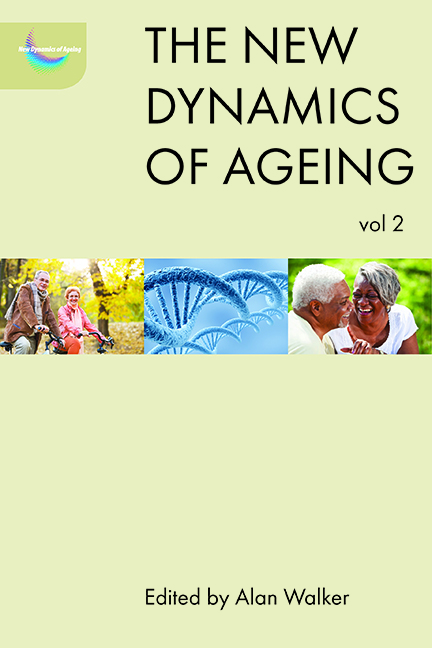twelve - Representing self – representing ageing
Published online by Cambridge University Press: 13 April 2022
Summary
Introduction
Thirty years ago Barbara Macdonald published a collection of essays with contributions by her partner Cynthia Rich on ‘old women, ageing and ageism’ (1984). It took a first-person feminist approach to exploring experiences of marginalisation and inequality that was unfamiliar in the field of social gerontology at that time. Macdonald provided candid self-descriptions of her grey hair, deeply lined face, liver-spotted hands, loose-skinned arm that seemed disconnected from her and, ultimately, of the young women who could not look her in the eye, who could talk about her but not to her. The book's front-cover portrait, with Macdonald's uncompromising gaze fixed directly on the reader, represented the writer's desire to challenge her embodied sense of ‘otherness’ and was echoed by the rallying title of the book, Look me in the eye.
Nearly 20 years later, the Madrid International Plan of Action on Ageing, drawn up at the Second World Assembly on Ageing, identified as one of its objectives the need to ‘facilitate contributions of older women and men to the presentation by the media of their activities and concerns’ (UN, 2002, p 45). The importance of promoting positive images of older women was highlighted as of particular concern. In the intervening years, research had shown that older women, more than older men, were heavily under-represented within an increasingly image-saturated society (Woodward, 1999), a trend that continues across the world (Zhang et al, 2006).
Visual images have, in fact, defined women's age through history (Botelho and Thane, 2001; Richards et al, 2012) and, in turn, been used by women to aid their political campaigns (Parkins, 1997). However, while the contemporary digital world opens the door to increasingly diverse visual representations of middle-aged and older women, cultural pressure to remain youthful has led to the misrepresentation of women through digital enhancement or airbrushing (Hurd Clark, 2010). Women are increasingly the target of a rapidly expanding anti-ageing industry. The dominant image of women in popular Western society is as a ‘living doll’ (Walters, 2010): a youthful, sexualised body is the route to success for women (Bartky, 1990; Bordo, 1992) and their task is to learn ‘how not to get old’.
Information
- Type
- Chapter
- Information
- The New Dynamics of Ageing Volume 2 , pp. 219 - 242Publisher: Bristol University PressPrint publication year: 2018
